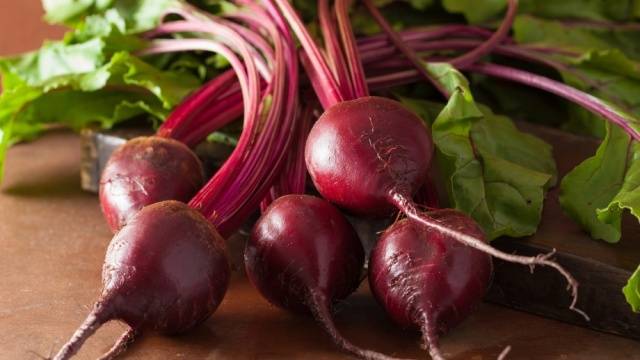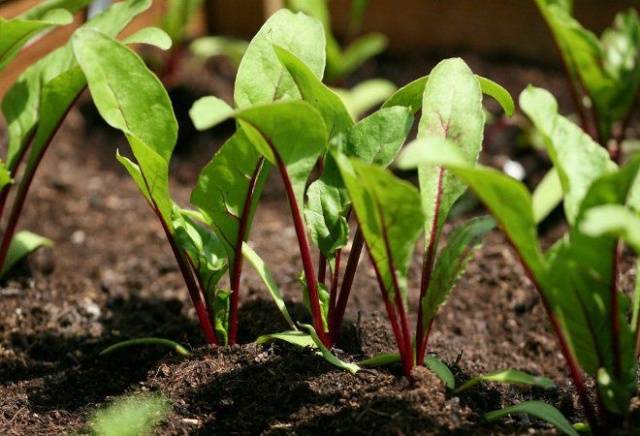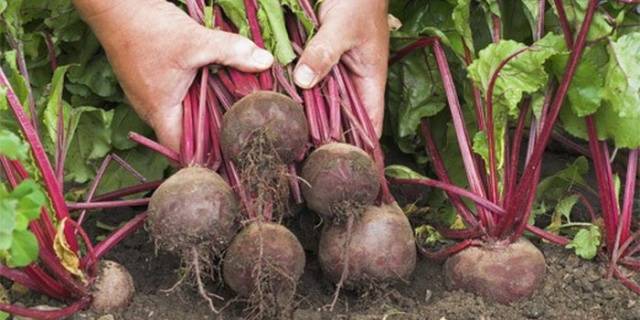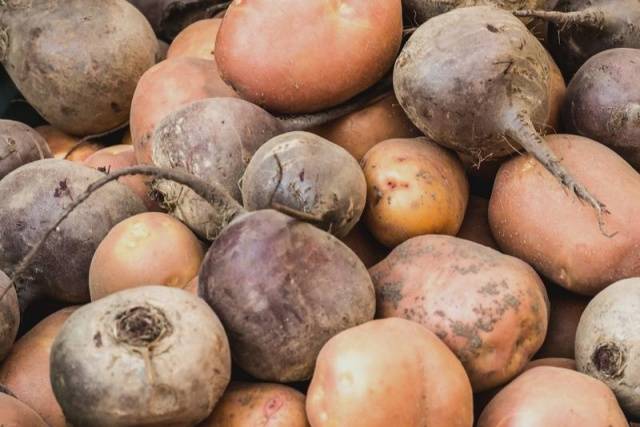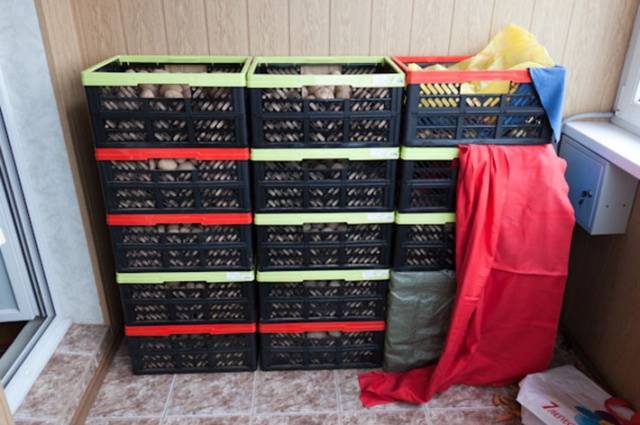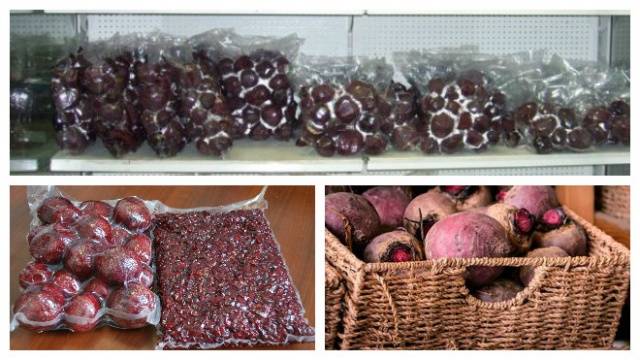Content
It is believed that beets have been grown in Rus' since the tenth – eleventh centuries. Traditionally, we choose root vegetables for our table, but in the East they prefer leafy varieties. The set of useful substances contained in this vegetable is unique. In addition to the fact that beets are a storehouse of vitamins, macro- and microelements, they fight cancer cells and are a good way to remove toxins. In terms of iron content, this root vegetable is second only to garlic, and iodine to seaweed. Agree that we are more accustomed to fighting iodine deficiency with beets than with algae. Includes root vegetables and rare vitamin U, which is a good help in the fight against allergies and normalizes the functioning of housing and communal services. It is also believed that in the Middle Ages, although the plague did not bypass us, it did not become such a monstrous disaster as in Europe, partly thanks to the consumption of this wonderful root vegetable.
Beets are easy to preserve, and in winter they can be fried, baked, boiled; they are good as a side dish and irreplaceable in borscht and soups. In addition to the traditional bookmark to the cellar Along with potatoes, you can freeze or dry root vegetables.In this article we will try to tell you how to store beets at home.
Storing vegetables begins with planting
We are not going to write here about beet agricultural technology. There are simply moments on which its keeping quality directly depends; special attention should be paid to them. We will talk about ways to store table (red) beets in winter. Sugar, fodder varieties and chard, a leafy vegetable, will remain outside our attention.
What beets to plant
There are early, middle and late varieties of table beets. The early variety ripens within 2–3 months from the moment of planting, but cannot be stored for long periods of time. Mid-season and late varieties of root crops are more suitable for these purposes. The latter are better stored, but do not always have time to ripen in the conditions of the middle zone and Siberia. The former ripen on time, but their long-term preservation requires strict adherence to temperature and storage conditions.
We will list some varieties of beets to make it easier to navigate when planting seeds or buying vegetables.
Pay attention to mid-ripening root vegetables:
- Bohemia;
- Bordeaux;
- Bona;
- Detroit;
- Red ball;
- Incomparable A 463;
- Mulatto.
Late varieties of beets with a long shelf life:
- Cylinder;
- Ataman;
- Donna;
- Matron;
- Patrick;
- Torpedo;
- Rival;
- Citadel.
Hybrids Lukerya F1 and Chudesnitsa F1 retain their marketability and taste until the next harvest.
Subtleties of care
Medium-sized root vegetables are best stored. In order to get beets of the required size, limit its feeding area by planting it according to a 10x10 cm pattern (the plant tolerates picking well at a young age).
The root crop loves potassium supplements, and a lack of boron can cause voids to appear, which will negatively affect storage. Nitrogen must be given in limited quantities, since its excess is not removed from the vegetable, but accumulates in the form of nitrates that are harmful to health. This is manifested by the appearance of white concentric circles in the beets, which are uncharacteristic of the variety. Not only will it be poorly stored, but after a while black spots will appear in the root crop.
This is true, but table salt has no place in the garden; it is better to replace it with sodium humate. So, you will get sweet root vegetables and will not worsen, but improve the condition of the soil.
Harvesting
Experienced gardeners know that the actual harvest dates do not always coincide with those indicated when describing the variety. They depend on temperature, watering, soil composition, and care. Usually ready for beet harvesting The tops turn yellow and dry out slightly.
In any case, this vegetable is dug up before frost sets in, later than potatoes, but before carrots. When there is a lot of rain, root crops should be harvested ahead of schedule to avoid putrefactive processes during storage.
Preparing beets for storage
Dig up the roots, being careful not to damage the skin. Place them under a canopy for several hours to allow the soil to dry thoroughly. Shake it off, but do not wash or rub the beets under any circumstances.Now sort it, select all vegetables damaged during harvesting, affected by rot or other diseases. They should be used for preparations or eaten first, since such root vegetables will not be stored for a long time.
Set aside all small items and very large beets; they are not suitable for winter storage. Such vegetables can last a month in the refrigerator or cellar. Small root vegetables dry out quickly, and large ones cannot be stored in winter, as they have a poor taste and increased fibrousness, which only increases over time. Vegetables with a diameter of about 10 cm with intact, smooth skin have the best shelf life.
For beets selected for winter storage, cut off the tops, leaving a stump of 1-3 cm. The tails should not be touched at all, no matter how long they are. Otherwise, pathogenic bacteria will enter the wound surface of root crops removed from the soil and not cleaned with water, which will greatly reduce the shelf life of the beets.
Place vegetables in a cool, dry, well-ventilated area, in a single layer if possible. You cannot put them into storage right away. The difference between the temperature of the environment and the storage will be detrimental to root crops. It is reduced gradually over 1-2 months. Only when the temperature outside reaches 8-9 degrees can the beets be lowered into the cellar or basement.
How to store beets
It is not enough to grow and harvest crops or buy high-quality inexpensive root vegetables on the market. It is important to preserve them with minimal loss of nutrients.Special vegetable storage facilities preserve agricultural products much longer than home conditions allow. The shelf life of late varieties of beets, which we can provide ourselves, is about 8 months. There are varieties of root vegetables that are bred specifically for winter storage; they remain fresh and suitable for consumption until early production appears. Some hybrids can be stored for up to a year.
Storage conditions
In winter, the biological processes of root crops do not stop completely, but only slow down. Our main task is to provide optimal conditions so that during storage, firstly, they do not grow, and secondly, to prevent the development of diseases that reduce consumer quality and shelf life.
Beets should be stored at a temperature close to zero or slightly higher, optimally 0-2 degrees (not higher than 4). This slows down biological processes and reduces moisture loss. Even a short-term decrease or increase in temperature by a few degrees in winter storage can cause the development of diseases.
The best air humidity for beets is 90-95%. One might assume that it is good to keep it at 100% to generally prevent fluid loss. This cannot be done because such humidity is an ideal environment for the development of rot and mold.
How to store beets if the basement is wet or completely dry? This problem is solved very simply. In a room with low humidity it is enough to place a bucket of water, and in a room with low humidity an open wide container with 10-15 kg of table salt or several red bricks.
If the temperature changes frequently, the storage time will be reduced to 4 months.
Storage in a private home
Perhaps the easiest of all root vegetables to store is beets. Firstly, it has a dense peel, which makes it difficult for putrefactive bacteria to penetrate, and secondly, it gets along well with other vegetables, especially potatoes. Let's see how to properly store beets:
- If you have a large basement and all the vegetables can be arranged freely, but there is a problem with free shelves (occupied with conservation or simply missing), root vegetables can simply be stored on the floor. Place wooden pallets or grates on it, which will provide ventilation to the bottom layer of vegetables and arrange them in several layers or pyramids. It is important that medium-sized root vegetables are at the bottom, and large ones at the top (they should be used first).
- It is best to store beets for the winter together with potatoes. So, it does not require a separate place, and besides, it uses the moisture released by its neighbor for its needs.
- Storing root vegetables on shelves in layers provides optimal storage conditions with the required humidity and temperature conditions.
- Shallow boxes or baskets can be used for winter storage of vegetables, even when stacked. The main thing is that the containers standing on top do not put pressure on the root crops from the lower tiers.
- Beets can be stored in moist, pre-disinfected sand, table salt, chalk, ash, sawdust or peat. It’s possible – it doesn’t mean it’s necessary.We often store root vegetables in sand, but it is better not to use other bulk materials unless absolutely necessary.
- Beets can even be stored in open plastic bags, although this is not the best way.
- In extreme conditions, root vegetables can be stored by dipping them into a clay mash. Once dry, it hardens and forms a protective cocoon on the surface of the vegetables, protecting them from drying out and rotting.
Preserving beets in a city apartment
How to properly store beets in a city apartment? After all in a refrigerator, wrapped in paper, it can only remain for 30 days. If each root vegetable is wrapped in foil or parchment, it can be stored in the vegetable compartment for up to 3 months.
It is often advised to place the beets in plastic bags and, without tying them, place them next to the slightly open balcony door. If you decide to try this storage method, consider the following:
- a slightly open balcony door in cold winter will significantly reduce the temperature in the apartment, which is unacceptable, but if it is closed, the storage conditions for root crops will be unsatisfactory;
- beets are not washed before storage; they harbor pathogenic bacteria that can harm the health of your family;
- It is unrealistic to ensure a temperature of 0-2 degrees at the balcony door.
If you have a glazed balcony or loggia, this simplifies matters:
- Place the root vegetables in boxes or baskets, sprinkle them with sand, salt, shavings or chalk so that they do not touch each other and cover with an old blanket on top.
- If you store bags of potatoes on the balcony, place beets on top.
- You can put each root vegetable in a clay mash, dry it, put it in boxes and cover it with a blanket.
Non-standard ways to store beets
We told you how to properly store beets, but there are other ways. They are especially good for city apartments if there is no room for vegetables on the balcony. It happens that due to the abundance or complete absence of rain, root crops grow small, large or deformed and will obviously be poorly stored. What to do with them?
Drying
A kilogram of raw beets yields 130 g of dried beets. It is easy to store in a linen bag or a tightly closed glass jar. It’s just that 90% of vitamin C is lost during heat treatment.
Wash and boil the root vegetables for 20 minutes. Cool, peel, cut into slices. Line a baking sheet with parchment paper, place the pieces in one layer and dry in the oven at a temperature of 70-80 degrees. The finished product should be dry but elastic.
There are many drying machines that allow you to dry beets with minimal loss of nutrients. Each one must come with instructions.
Freezing
Grate fresh beets on a coarse grater, place in bags and store in the freezer. Portions should be such that the chopped root vegetables removed are used immediately; they cannot be re-cooled. Frozen beets are only suitable for first courses and gravies.
Conclusion
As you can see, there are many ways to store beets. Choose the one that suits you and provide your family with vitamins for the winter.



